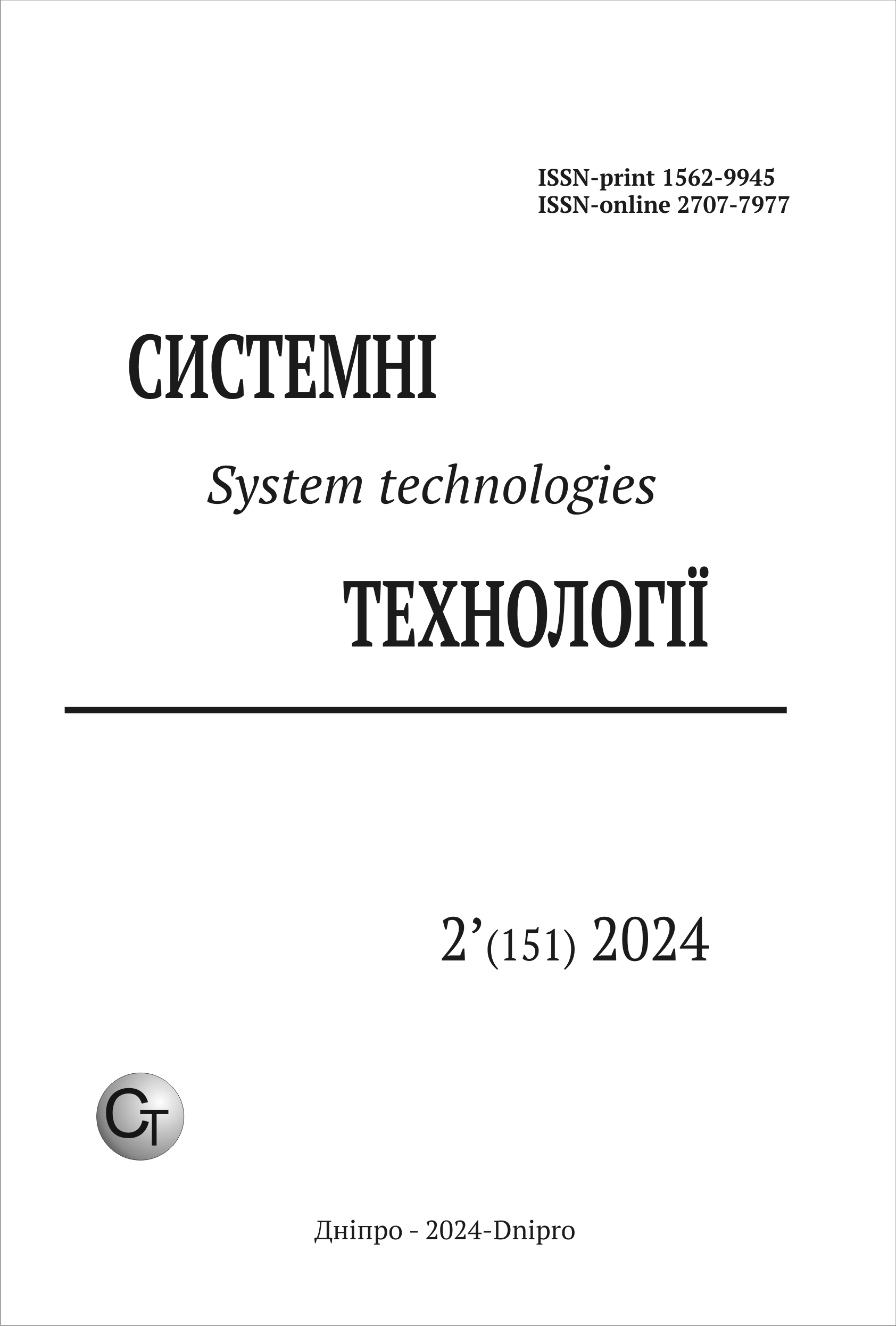Нейронно-мережевий підхід до неперервного вкладення одновимірних потоків даних для аналізу часових рядів в реальному часі
DOI:
https://doi.org/10.34185/1562-9945-2-151-2024-08Ключові слова:
імітаційне моделювання, моталка, смуга, крутильні коливання, пружні деформації, вільні коливання аналіз часових рядів, вбудовування часових рядів, зменшення розмірностіАнотація
Задача вкладення одновимірних часових рядів у багатовимірні простори дуже розповсюджена і зустрічається у багатьох галузях досліджень. Методи, які розв’язують цю задачу, зазвичай покладаються на ту чи іншу форму вкладання з затримкою, яке реконструює фазовий простір невідомої системи шляхом асоціювання значень часового ряду з історичними даними. Ми пропонуємо більш гнучкий метод, який використовує правила для комбінування значень часового ря-ду, щоб створити вкладення, які є більш репрезентативними щодо взаємозв’язку даних часового ряду одне з одним.
Посилання
Broomhead D.S. and King G. P. (1986). Extracting qualitative dynamics from experimental data. Physica D: Nonlinear Phenomena, Volume 20 (2-3), Pages 217-236. https://doi.org/10.1016/0167-2789(86)90031-X.
Cao, L. (1997). Practical method for determining the minimum embedding dimension of a scalar time series. Physica D: Nonlinear Phenomena, Volume 110 (1-2), 43-50, https://doi.org/10.1016/S0167-2789(97)00118-8.
Chakraborty, B. (2014).A Proposal for Classification of Multisensor Time Series Data based on Time Delay Embedding. International Journal on Smart Sensing and Intelligent Systems,7(5) 1-5. https://doi.org/10.21307/ijssis-2019-120
Datseris, G. (2018). DynamicalSystems.jl: A Julia software library for chaos and nonlinear dynamics. Journal of Open Source Software, 3(23), Pages 598, https://doi.org/10.21105/joss.00598
Frank, J., Mannor, S., & Precup, D. (2010). Activity and Gait Recognition with Time-Delay Embeddings. Proceedings of the AAAI Conference on Artificial Intelligence, 24(1), Pages 1581-1586. https://doi.org/10.1609/aaai.v24i1.7724
Geist K., Parlitz U., and Lauterborn W., (1990). Comparison of Different Methods for Computing Lyapunov Exponents, Progress of Theoretical Physics, Volume 83 (5), Pages 875–893, https://doi.org/10.1143/PTP.83.875
Gupta, V. and Mittal, M. (2019). QRS Complex Detection Using STFT, Chaos Analysis, and PCA in Standard and Real-Time ECG Databases. J. Inst. Eng. India Ser. B 100, 489–497. https://doi.org/10.1007/s40031-019-00398-9
Hegger R. and Kantz H. (1999). Improved false nearest neighbor method to detect determinism in time series data. Phys. Rev. E, Volume 60, Pages 4970-4973, https://doi.org/10.1103/PhysRevE.60.4970
Kennel M. B., Brown R., and Abarbanel H. D. I. (1992). Determining embedding dimension for phase-space reconstruction using a geometrical construction. Phys. Rev. A, Volume 45, Pages 3403–3411, https://doi.org/10.1103/PhysRevA.45.3403.
Kıymık M. K., Güler İ., Dizibüyük A., and Akın M. (2005). Comparison of STFT and wavelet transform methods in determining epileptic seizure activity in EEG signals for real-time application, Computers in Biology and Medicine, Volume 35, Issue 7, 603-616, ISSN 0010-4825,
https://doi.org/10.1016/j.compbiomed.2004.05.001.
Koshel, E. (2020). Local jacobian estimation for delay embedded time series data. In XVIIІ International scientific and practical conference, Dnipro (pp. 152-153).
Koshel Y. V. and Belozyorov V. Y. (2023). Univariate Time Series Analysis with Hyper Neural ODE. Journal of Optimization, Differential Equations and Their Applications (JODEA), 31(2), 50-66.
Krakovská A., Mezeiová K., and Budáčová H. (2015). Use of False Nearest Neighbours for Selecting Variables and Embedding Parameters for State Space Reconstruction. Journal of Complex Systems, Volume 2015,
https://doi.org/10.1155/2015/932750.
Nalmpantis, C., Vrakas, D. (2019). Signal2Vec: Time Series Embedding Representation, Engineering Applications of Neural Networks. EANN 2019. Communications in Computer and Information Science, vol 1000. https://doi.org/10.1007/978-3-030-20257-6_7
Pecora L. M., Moniz L., Nichols J., and Carroll T. L. (2007). A unified approach to attractor reconstruction. Chaos, Volume 17 (1). https://doi.org/10.1063/1.2430294
Takens, F. (1981). Detecting strange attractors in turbulence. In: Rand, D., Young, LS. (eds) Dynamical Systems and Turbulence, Warwick 1980. Lecture Notes in Mathematics, vol 898. Springer, Berlin, Heidelberg.
https://doi.org/10.1007/BFb0091924
Tüske, Z., Golik, P., Schlüter, R., & Drepper , F. R. (2011). Non-stationary feature extraction for automatic speech recognition, IEEE International Conference on Acoustics, Speech and Signal Processing (ICASSP), Prague, Czech Republic, 5204-5207, doi: 10.1109/ICASSP.2011.5947530.
Завантаження
Опубліковано
Номер
Розділ
Ліцензія
Авторське право (c) 2024 Системні технології

Ця робота ліцензується відповідно до ліцензії Creative Commons Attribution 4.0 International License.















